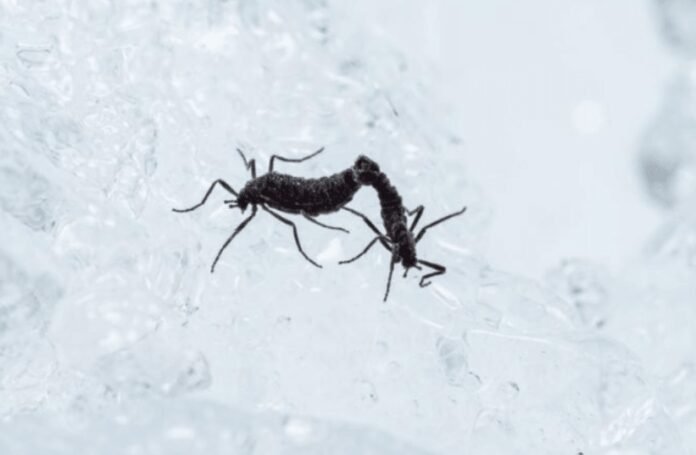
The Antarctic midge (Belgica antarctica) holds the unique distinction of being the only insect native to Antarctica. Inhabiting one of the most extreme environments on Earth, this tiny yet resilient insect has evolved remarkable survival strategies to endure freezing temperatures, prolonged dormancy, and limited food availability. Recent research has shed light on its adaptive mechanisms, which could offer valuable insights into how species respond to climate change.
Life Cycle and Dormancy Mechanisms
The Antarctic midge follows a two-year life cycle, during which it employs two distinct dormancy strategies to withstand the region’s harsh conditions:
- Quiescence: A temporary dormancy triggered by immediate environmental stress, allowing the midge to remain inactive during severe conditions and resume activity when circumstances improve.
- Obligate Diapause: A fixed, predetermined dormancy phase that occurs in the second year of life, enabling the insect to conserve energy and survive the long Antarctic winter.
These survival mechanisms ensure that the midge can time its growth, energy storage, and reproductive processes in sync with seasonal changes.
Quiescence vs. Obligate Diapause: A Dual Survival Strategy
Both quiescence and obligate diapause play a vital role in maximizing the midge’s survival:
- Quiescence provides flexibility, allowing the insect to enter and exit dormancy rapidly based on environmental conditions.
- Obligate diapause is a more structured survival tactic, ensuring the midge is prepared for Antarctica’s severe winter conditions well in advance.
By combining both strategies, the Antarctic midge has fine-tuned its ability to endure unpredictable climate variations.
Adaptations to Freezing Temperatures
One of the most fascinating survival mechanisms of the Antarctic midge is its ability to avoid internal freezing despite extreme subzero temperatures. The insect achieves this by:
❄ Losing up to 70% of its body fluids, preventing ice crystal formation, which could damage internal tissues.
❄ Surviving in a frozen state for up to six months, relying on stored energy reserves.
❄ Producing protective proteins that enhance cold tolerance and increase its chances of survival.
This ability to endure freezing temperatures without suffering damage makes the Antarctic midge one of the most cold-resistant insects on the planet.
The Threat of Climate Change
Despite its impressive resilience, the Antarctic midge now faces new challenges due to climate change. Warmer winter temperatures could:
🌡 Reduce larvae survival rates, as the insects rely on a stable cold environment for successful overwintering.
🌡 Lead to energy depletion, affecting their ability to complete their life cycle and reproduce.
🌡 Disrupt ecological balance, potentially impacting other organisms in Antarctica’s fragile ecosystem.
A decline in midge populations could have cascading effects, as it plays a crucial role in the nutrient cycle and serves as a food source for other organisms.
Future Research and Conservation Efforts
Scientists are intensifying efforts to monitor midge populations in their natural habitat, focusing on how they adapt to shifting temperatures. However, conducting research in Antarctica’s extreme conditions presents significant challenges, including limited accessibility, frozen terrain, and unpredictable weather patterns.
Understanding how the Antarctic midge responds to climate change is crucial not only for its survival but also for broader ecological research on adaptation, resilience, and species conservation in extreme environments.
Ecological Importance of the Antarctic Midge
Despite its small size, the Antarctic midge plays a vital role in its ecosystem:
- Contributes to nutrient cycling, breaking down organic matter.
- Supports food chains, as it is one of the few terrestrial invertebrates in Antarctica.
- Maintains ecological balance, ensuring the stability of the limited land-based biodiversity in Antarctica.
The loss of the Antarctic midge could disrupt the delicate Antarctic ecosystem, highlighting the urgent need for continued research and conservation measures.
Summing Up
The Antarctic midge’s survival strategies offer a remarkable example of nature’s resilience in the face of extreme environments. However, climate change poses a serious threat to this unique species, potentially disrupting its life cycle and pushing it toward decline. As researchers work to uncover more about this insect’s adaptations, its story serves as a reminder of the interconnectedness of ecosystems and the impact of global climate shifts.
By studying the Antarctic midge, scientists gain valuable insights into biological survival mechanisms, paving the way for broader applications in science, conservation, and climate adaptation strategies.

